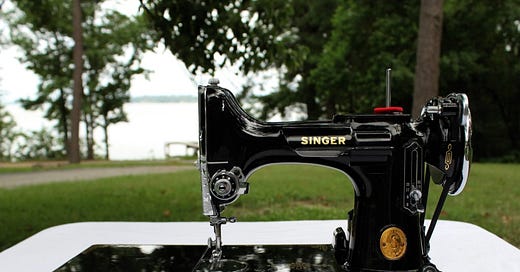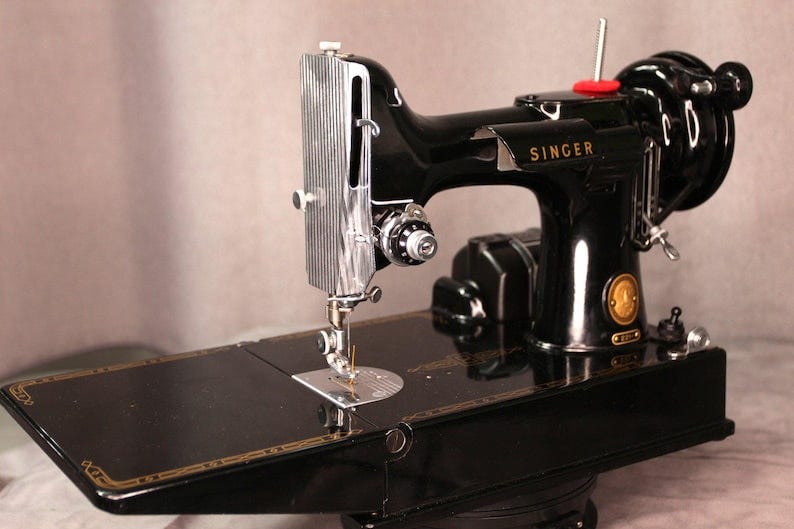A few months ago, I received a call from a woman whose machine was recently given a full COA tune-up at our shop.
“My machine is spitting out a nest of jumbled thread beneath the fabric and it never did this before until YOU touched my machine!”
I tried to troubleshoot the problem over the phone with her (as I was 99% sure the take-up lever wasn’t threaded properly), but she wouldn’t hear it. She even ignored me when I reminded her of the 90-day warranty period we offer on all repairs. She was furious and demanded a full refund, which I gave to her.
Fast forward a couple of hours and I’m in my dad’s office (admittedly being melodramatic) complaining about the interaction.
The thing that specifically grinds my gears was the accusatory tone this woman took, as if our technicians purposefully screwed up her machine. I admit that sewing machine repair is difficult and occasionally we make mistakes, but I know our repair department and the pride they take in their work. We have zero incentive to do such things on purpose.
“Does she really think we go around breaking people’s machines? Is that how we’ve stayed in business over 30 years?”
“I know, I know,” said my dad. “But unfortunately it has happened before.”
“What do you mean?”
“Ask your uncle about the guy on Solano Avenue and what he would do to Singer Featherweights.”
So I reached out to my Uncle Marty. The story he recalled is a true horror story for sewing machine enthusiasts all over the world. . . .
Back in the day, when my father and uncle first started The Sewing Machine Shop, there was a nearby competitor 20 minutes down the road who also repaired sewing machines. It was a one-man operation ran by a guy who I am going to call Chip.
Chip’s store was more established than my father and uncle— they had just opened up the shop, while he had been in business for decades. However, slowly but surely they started getting business from sewists who were leaving Chip and instead taking their business to The Sewing Machine Shop. Apparently, Chip had a tendency to yell at customers if they didn’t agree with him. That was enough for many to take their business elsewhere. But the yelling wasn’t so bad compared to what was later discovered, when my uncle began to notice a pattern. As The Sewing Machine Shop picked up more business, Marty was hearing the same story over and over again:
“I took my featherweight into Chip’s shop for routine service. Now the machine is not picking up the bobbin thread or making a stitch!”
And, in all of these instances, the customer had the same problem: the hook point of their featherweight was broken off.
Keep reading with a 7-day free trial
Subscribe to The Sewing Machine Newsletter to keep reading this post and get 7 days of free access to the full post archives.





